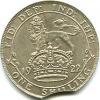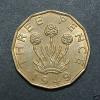I can describe it for you which might help me and you. It is a little like a complex geometric KNOT, but rather than containing geometric lines as similar patterns do in islamic art and celtic art this one uses a triangulated association of animals, namely a Lion and usually associated with two smaller "cubs" or "lambs" in the first instance. There is a lot of artistic ambiguity in the form and it is anatomically possible that it is either or both ( as lamb and cub each have triangular forms bounded by the ears and the nose of similar dimensions at a young age ) . All of these rely on a triangular tessellation pattern. However it is complex but if you stick with the "triangle" idea alone the pattern "rotates... it moves" in the same way that a stop frame dynamic painting or picture shows movement it can do this because there are set points in the arrangement the ears, eyes, and nose. in a remarkable way the triangulation points "move" move independently yet each one contributes to the next in a ribbon like flow. So there is a definite geometry to it similar to what in modern day we would call a triangular fractal like growth pattern which uses a simple device of the sharing of elements to make up a larger form.
One remarkable feature of it is, which gives it a beautiful pathos, that lion to "lamb" noses touch or the Lion licks the the Lamb. Of course this may well have an allegorical meaning Lion as protector and security but also carer together with the most obvious reference to Kingship and Protector and also Christian motif Lion and Lamb.
I fully accept the bizarre nature of the theory but I am happy to continue to research it. In later coins I believe some other "knots" are added one of which appears to be a jumble linear code using the motif of HONI SOIT QUE MAL Y PENSE and a triangular association similar to the Lion Lamb one which uses the George and Dragon image. The Two later "knots" I have only thus far found to begin in the Bronze series from 1860 and there is some overlap. I only noticed it at first in the Bronze series and thought that it may have been the remnant of the "lost" design of LCW lost as a result of technical problems with the new material. (there appears to be obscure references suggesting that the first designs would not work as the relief was too high and the die had to be recut forced on the artist by the material change in 1859 1860 )
Initially I noticed that in coins buried in the soil that a pattern seemed to emerge suggesting a variable rate to corrosion and this often followed some type of non random line. There are lines which do not appear to be the result of wear or random nature. These cross the surface of the design passing through the extant design and it is these cross cutting lines that the method using lamp black and fat help me to plot. If nothing else they will show that across the surface these "cross cuts" are not random as they appear again and again in the same shape or position. The most obvious of these triangles can be seen in the shield and in the area below the drapes which pick out underlying pattern and it intrigues me if this is an intentional act or not.
Other forum members have pointed out the stupidity of the idea and questioned its purpose and the method by which it might be delivered to the coin face. Together with the difficulty in the theory of how any "authority" could recognises if there is a problem with counterfeiting. Hence the need to identify a simple method or recognition which is where I returned to first principles of finding a method that could be used with materials available at the time. The method of application of this "hidden" pattern I can only assume to either by etching onto the die or etching onto the blanks. This raises the many problems that have been pointed out by members and in general I am considered the resident crack pot LOL.....but I persist for no other reason than the novelty of the approach and the skills of observation it has afforded me. I have spent my life in these strange "no man's land" scenarios so as long as my constitution holds I will try see this through to the end point. If it is not there it will make for a very funny, poignant and reflective book on the onset of mental health issues. But for now I still believe in my own sanity at least. I had hoped that a few more adventurous members would join in my quest but that seems unlikely for the moment as they cannot suspend the initial barrier to the idea , which I fully understand as I had them myself three years ago when I started to question this. As a scientist I am happy to nullify it, at some point, but not until the negative evidence outranks the positives and so far the positive is winning (in my mind).
The patterns exists in Gold and Silver (often easier to see in fact) and the other metals
 Coinpublications.com
Coinpublications.com





.jpg.59f7f7c5ad8ff67a70f8db9e7dffd413.thumb.jpg.0826c31400cad2e4de5fe0a6afd6fd8b.jpg)
